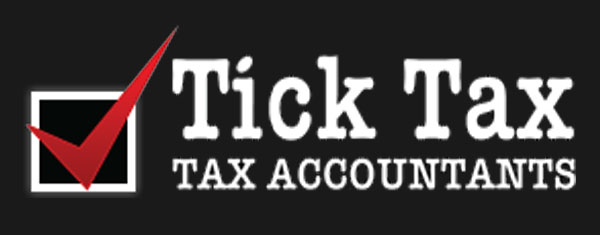Superannuation Changes Passed

Treasurer Scott Morrison handed down his first Federal budget on 3rd May 2016 and within it were significant changes to superannuation. On Wednesday 23rd November 2016 the ‘Fair and Sustainable Superannuation’ Bill and the ‘Superannuation (Objective)’ Bill were passed through both houses.
The Government agreed, as part of its response to the Financial System Inquiry (FSI), to enshrine the objective of the superannuation system in the law. This should help to reduce future governments from constantly making changes to the system. It will also act as a guide to policy makers, regulators, industry and the community about superannuation’s fundamental purpose.
The bill has enshrined into law that the objective of the superannuation system is to provide income in retirement to substitute or supplement the age pension. With over $2 trillion in assets invested in Australian’s superannuation system it is Australia’s second largest savings vehicle.
- Any future changes to the system will need to meet not only the defined objective of the superannuation system but also five subsidiary objectives as stated below:
- Facilitate consumption smoothing over the course of an individual’s life;
- Manage risks in retirement;
- Be invested in the interests of superannuation fund members;
- Alleviate fiscal pressures on government from the retirement income system; and
- Be simple, efficient and provide safeguards.
The new defined objective has also reduced the extent to which the superannuation system can be used for tax minimisation and estate planning. The Government has suggested that only 4% of individuals will be adversely effected by the changes and those in this percentage are unlikely to rely on the age pension in retirement.
TRANSFER BALANCE CAP
The ‘Fair and Sustainable Superannuation’ Bill has introduced a $1.6 million cap on the total amount of superannuation savings that can be transferred from an ‘accumulation account’, where earnings are concessionally taxed, to a ‘retirement account’, where earnings are tax free. Below are some points regarding how this cap will work:
- The cap will apply from 1 July 2017;
- Amounts currently in excess of the cap need to be either withdrawn or transferred into accumulation account;
- Additional transfers available if full cap not used;
- Cap applies to total amount held in retirement accounts with all superannuation providers;
- Retirement account can grow in excess of $1.6 million from earnings;
- You cannot top up retirement account, if after the cap was used, the balance decreased due to poor investments or pension withdrawals;
- Will be indexed in $100,000 increments in line with the consumer price index;
- If you have not utilised the full cap prior to indexation you will be able to use the new limit.
REDUCING THE CONCESSIONAL AND NON-CONCESSIONAL CONTRIBUTION LIMITS
The Government is also lowering the concessional and non-concessional contribution limits from 1 July 2017.
Non-concessional contributions include contributions from income after tax income such as take home pay, inheritances, spouse contributions, proceeds from sales of residential property or shares and contributions in excess of the concessional contribution limit.
The annual non-concessional contribution cap will be lowered from $180,000 per year to $100,000 (or $300,000 every three years). Individuals with a balance of $1.6 million or more will no longer be eligible to make non-concessional contributions. The current rules allowing individuals under the age of 65 to contribute three years worth of non-concessional contributions over a three year period will still remain. However, if their balances are near $1.6 million they will have limited access to bring forward arrangements. Transitional arrangements will apply for those who have triggered the bring forward rule before 1 July 2017 to reflect the new annual caps.
Concessional contributions are before tax contributions which include compulsory superannuation guarantee contributions, voluntary salary sacrificed contributions and voluntary personal contributions where a tax deduction is claimed.
The annual concessional contribution cap will be lowered from $35,000 and $30,000 for individuals above and below the age of 50 years respectively to $25,000 for all individuals regardless of age. The limit will be indexed in line with wage growth in $2,500 increments.
REDUCING THE DIVISION 293 THRESHOLD
The Government has reduced the income threshold above which individuals will be required to pay an additional 15% tax on their concessional contributions from $300,000 to $250,000 per annum. The threshold is the combined income and concessional super contributions of an individual.
The additional tax is imposed on the amount of contributions, up to the concessional cap, if your combined income and concessional contributions are greater than $250,000 in a financial year. Otherwise, the additional tax is only imposed on the portion of the contributions that take an individual over the threshold.
DEDUCTIONS FOR PERSONAL SUPERANNUATION CONTRIBUTIONS
There are wins from the ‘Fair and Sustainable Superannuation’ Bill. One of them is the abolishment of the so-called 10 percent rule. The rule allowed only those individuals, whose earnings from salary and wages were equal to 10% or less of their total assessable income, to claim a tax deduction for personal contributions made into superannuation. With the removal of this rule all individuals, regardless of the make-up of their assessable income, can claim a tax deduction for personal contributions made into superannuation.
This amendment will help small businesses offer salary sacrificing arrangements to more employees. Individuals need to ensure that their total concessional contributions being contributed into their superannuation accounts don’t exceed the cap.
CATCH-UP CONCESSIONAL CONTRIBUTIONS
There are many Australians that take time out of the workforce, volunteer, have irregular income or whose ability to save varies year to year. This can result in lower superannuation balances for these individuals compared to their peers.
From 1 July 2018, people with superannuation balances less than $500,000 will be able to access any unused component of their concessional contributions cap on a rolling basis for a period of five years.
SPOUSE SUPERANNUATION TAX OFFSET
Currently, taxpayers can claim an 18% offset on superannuation contributions of up to $3,000 made on behalf of their low-income or non-working spouse. The maximum rebate allowed is $540. To be eligible a taxpayer’s spouse must not exceed earnings up to a total of $13,800. The Government has extended this limit to $40,000 per annum, now allowing more taxpayers to access the offset.
LOW-INCOME SUPERANNUATION TAX OFFSET (LISTO)
All concessional contributions paid into superannuation are taxed at 15%. For low income earners the 15% tax means they pay more tax on their superannuation contributions than on their take-home pay.
The LISTO will ensure individuals with a taxable income of $37,000 will receive a refund within their superannuation accounts for contributions tax of up to $500.
TRANSITION TO RETIREMENT (TTR) PENSIONS
When an individual reaches preservation age prior to retirement age they are eligible to start accessing their superannuation under an arrangement called a ‘transition to retirement’ pension or income stream.
There is usually a tax advantage for starting a TTR but under the new defined objective for the superannuation system, tax minimisation strategies can no longer be a focus.
As a result, the earnings that support a transitional superannuation income stream will be taxed at 15% as they would have in an accumulation account.
This change will substantially reduce the incentive for people to establish transition to retirement accounts as a tax minimisation measure. But at the same time it will retain access to superannuation for those individuals who are genuinely transitioning to retirement.
If you currently have a transition to retirement income stream or are considering one please contact Tick Tax so that we can calculate the tax impact for you as a result of this change.
